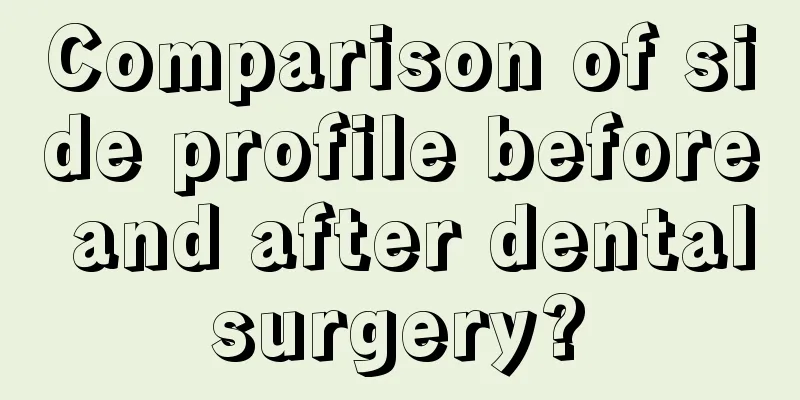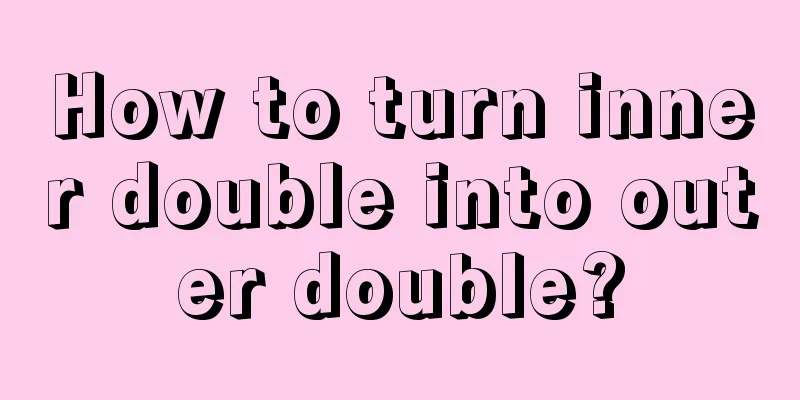Comparison of side profile before and after dental surgery?

|
In this age where looks are everything, many people lose their beauty and confidence because of their deformed teeth. The emergence of orthodontics has given hope to many people with deformed teeth. Traditional braces can easily lead to inability to speak, tongue rubbing, mouth rot, etc., and teeth can also become loose. In fact, these are all normal phenomena and will generally disappear in 1-2 weeks. Many people have become more confident and cheerful through orthodontics, and the most important thing is that they dare to take photos of their side faces. Simple irregular teeth or malocclusion will not have much impact on the face shape as long as the development of the upper and lower jaws is normal. However, if the malocclusion is combined with abnormal development of the upper and lower jaws, the face shape will appear uncoordinated and even have aesthetic defects. If you find malocclusion, you should undergo dental correction in time. There are three specific situations: 1. Malocclusion caused by protrusion of the maxillary and mandibular bones or the alveolar bones: there will be difficulty in closing the lips, or the muscles around the lips will be tight when closing the lips; when you open your mouth and smile, the teeth and gums will be exposed too much. 2. Malocclusion due to overdevelopment of the upper jaw or underdevelopment of the lower jaw: The patient has a face with obvious protrusion of the upper jaw or retracted mandible. In severe cases, it will be difficult to close the lips and the upper front teeth will be exposed too much. 2. Malocclusion due to overdevelopment of the upper jaw or underdevelopment of the lower jaw: The patient has a face with obvious protrusion of the upper jaw or retracted mandible. In severe cases, it will be difficult to close the lips and the upper front teeth will be exposed too much. Example 1. Underbite - easily forms a "crescent face" commonly known as "overbite", that is, the lower teeth cover the upper teeth. It seriously affects the beauty of the face and causes a crescent face. Patients with a crescent face will have atrophy or poor development of the upper jaw bone, accompanied by a collapsed nose. If accompanied by a protruding lower jaw bone, the face will look like a crescent face from the side. In addition, it will lead to decreased eating and chewing functions, increase the burden on the gastrointestinal tract, and may also affect pronunciation and physical health.2. Uneven jaw - asymmetrical face. Due to decayed or missing teeth on one side, eating with the other side for a long time will lead to asymmetrical face, which seriously affects the appearance and mental health. Once unilateral chewing causes serious consequences such as facial asymmetry, it is difficult to correct it. Therefore, it is crucial to eliminate the relevant causes. For example, you should maintain good oral hygiene on a daily basis, go to the hospital to check your teeth every six months, and treat dental diseases in a timely manner if you find them. If you are missing teeth, you should take appropriate measures or get dentures. In short, after the cause of unilateral chewing is eliminated, you should insist on chewing food with the teeth on both sides. If the facial asymmetry is not serious and the patient is not too old, the deformity will gradually disappear in the future. In severe cases, it can be restored through orthodontic treatment or facial plastic surgery. 3. Buck teeth - lip protrusion affects facial curves. Buck teeth will become more obvious with age, which will make patients very insecure and greatly affect their academic and social performance. Some children become inferior and should be corrected in time.4. Crossbite of individual teeth - Sunken upper lip means that individual front teeth or two teeth are crossbite, which is extremely harmful. It will affect the normal development of the upper face and cause the upper lip to be sunken. Moreover, its potential harm is that it is most likely to cause temporomandibular joint disorder in children when they grow to 30 to 40 years old. 5. Recessive mandible and underdeveloped chin, small chin, commonly known as bird's beak. It affects the appearance of the face. At the same time, because the lower teeth are too narrow, the development of the upper teeth is restricted, which also affects the function. |
<<: What is the use of pure alkali?
>>: What's wrong with the blue eyes
Recommend
Can cervical vertebrae cause dizziness?
Cervical spondylosis is a relatively common disea...
The harm of chicken essence to the fetus
Pregnant women need to pay special attention to t...
Is it possible to cure small cell lung cancer
Is it possible to cure small cell lung cancer? Al...
How to get a fatter face the fastest
Most people are losing weight now, but some peopl...
What is the cause of thyroid cancer?
What is the cause of thyroid cancer? Many people ...
What to do if nasopharyngeal carcinoma has bone metastasis? What is the best way to treat it?
What should we do if nasopharyngeal carcinoma has...
The best time to drink red wine every day
Western red wine is different from Chinese liquor...
Are you suffering from the fear of death? Symptoms of fear of death
Death is an inevitable outcome for everyone. Most...
How to treat Barrett's esophagitis?
The cause of Barrett's esophagitis is still u...
What are the common symptoms of lung cancer
Lung cancer has brought certain impacts to our li...
What are the characteristics of testicular cancer?
What are the characteristics of testicular cancer...
The hypothalamus includes
The hypothalamus is the most important component ...
Can advanced esophageal cancer be cured?
Esophageal cancer has caused many families to los...
What to do if flour has bugs
Flour can be used to make many different dishes, ...
Ultrasound diagnostic manifestations of renal cancer
The ultrasound manifestations of renal cancer wer...









